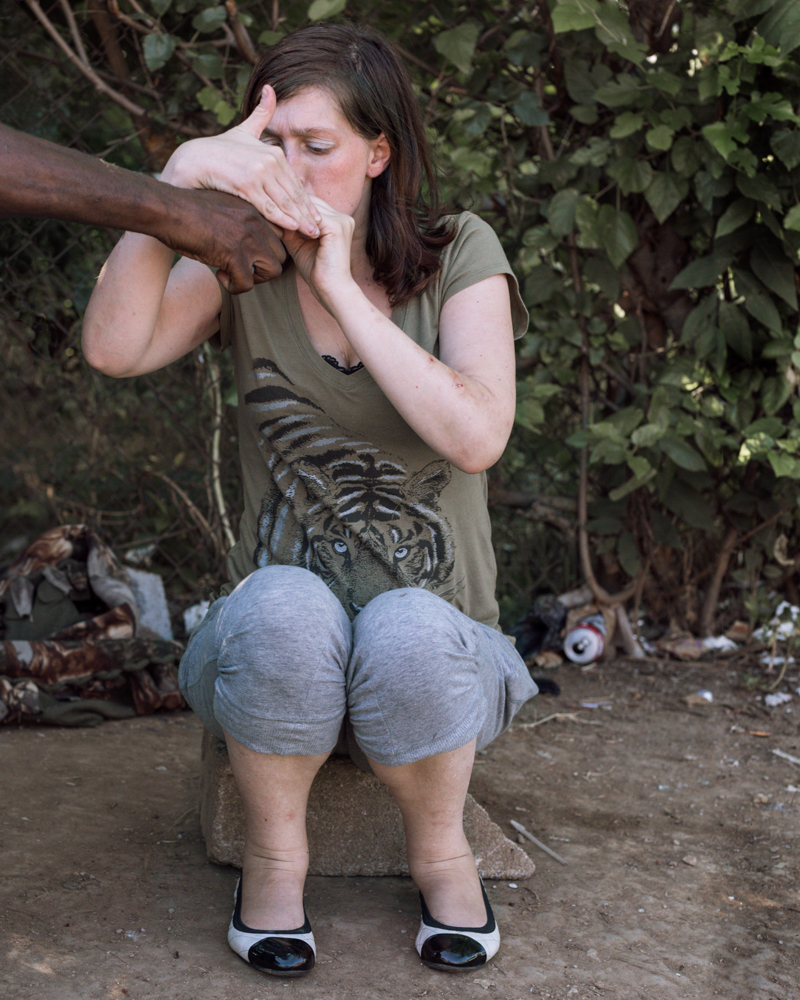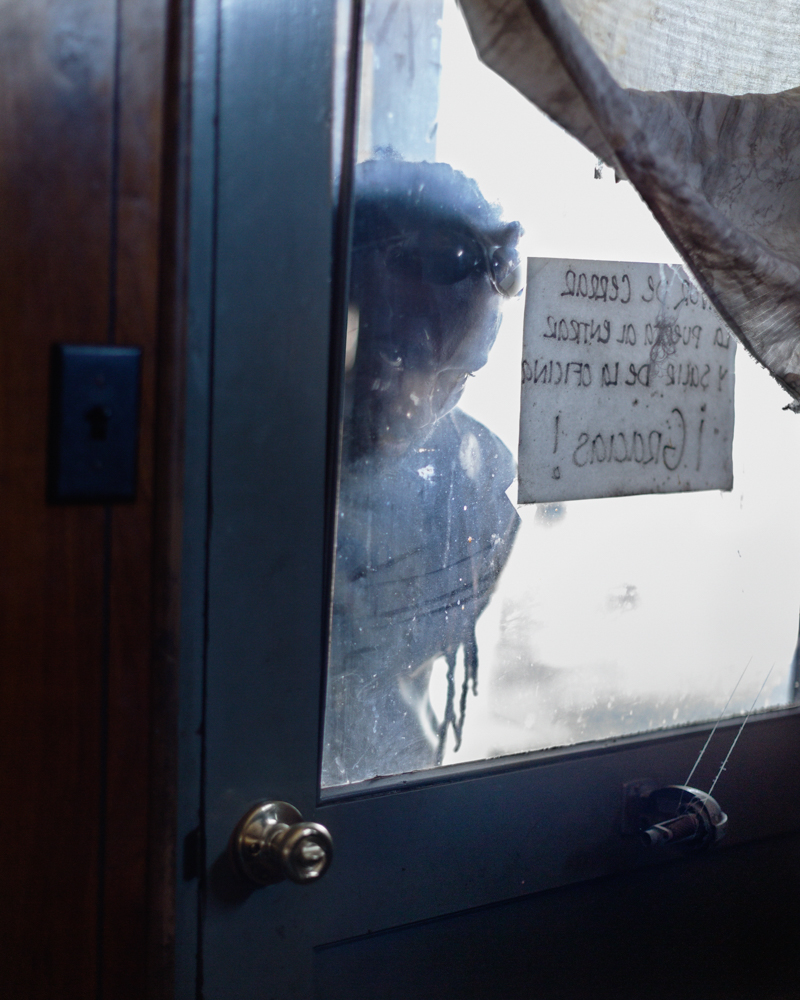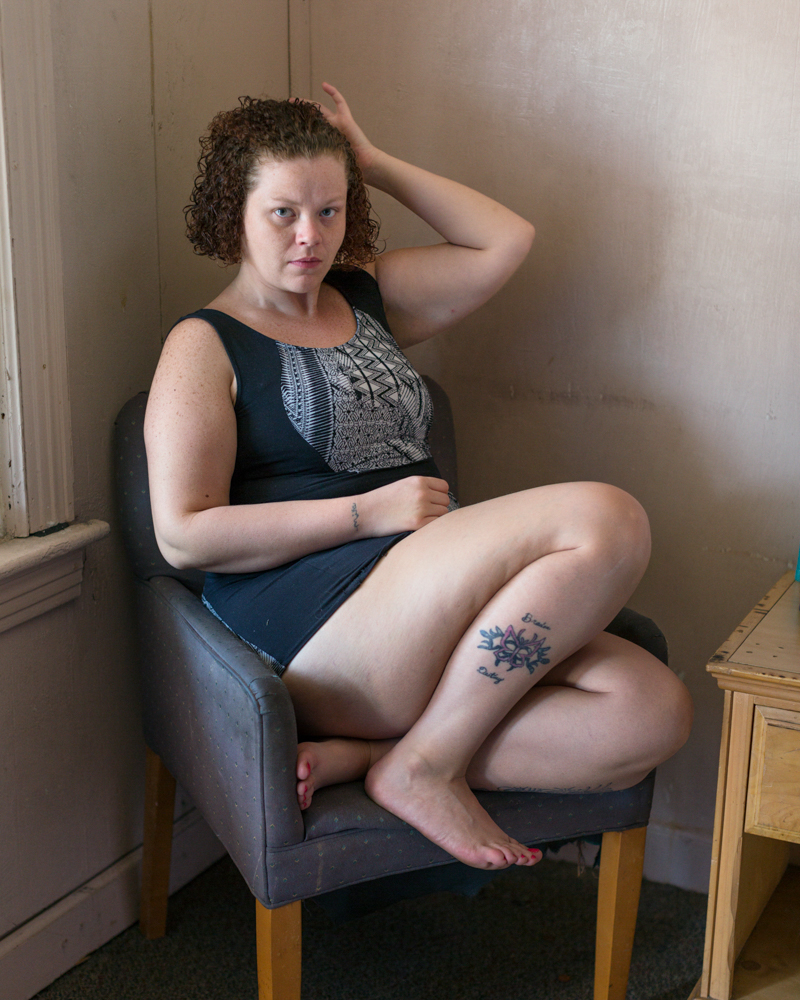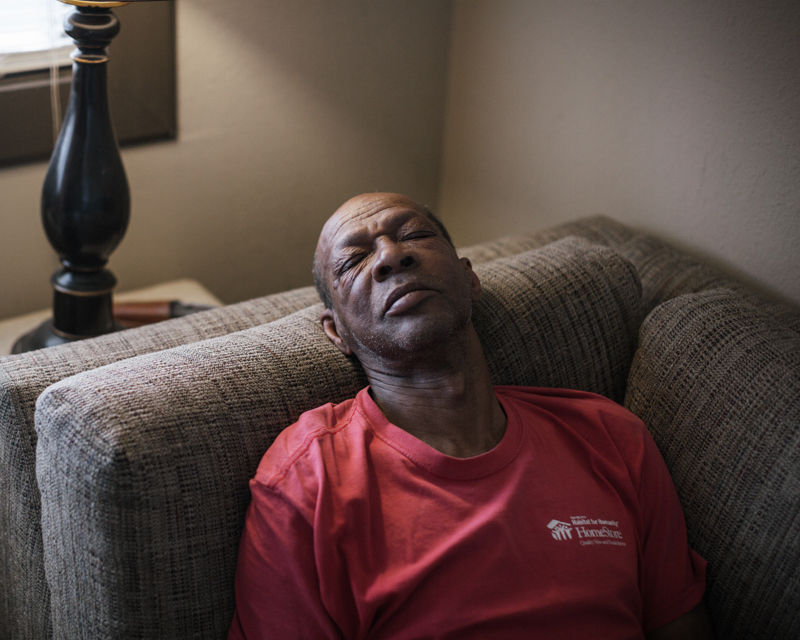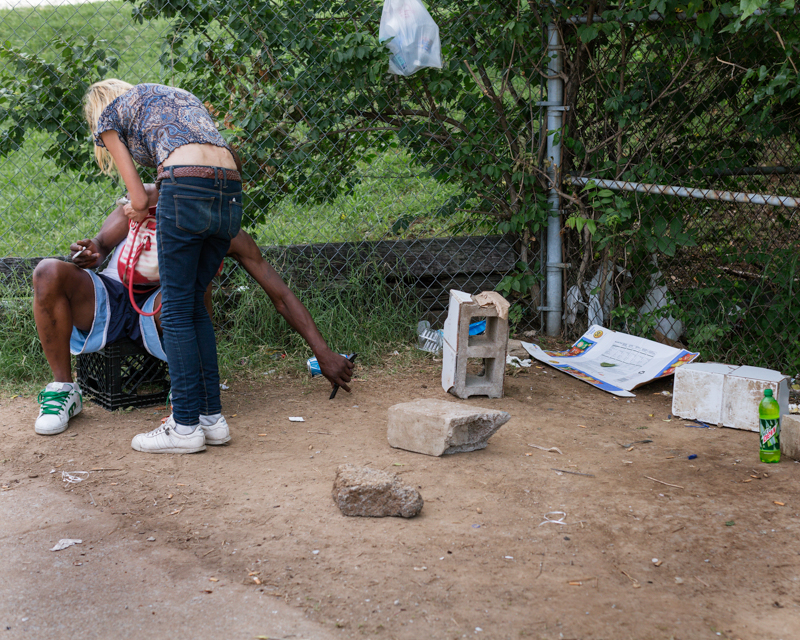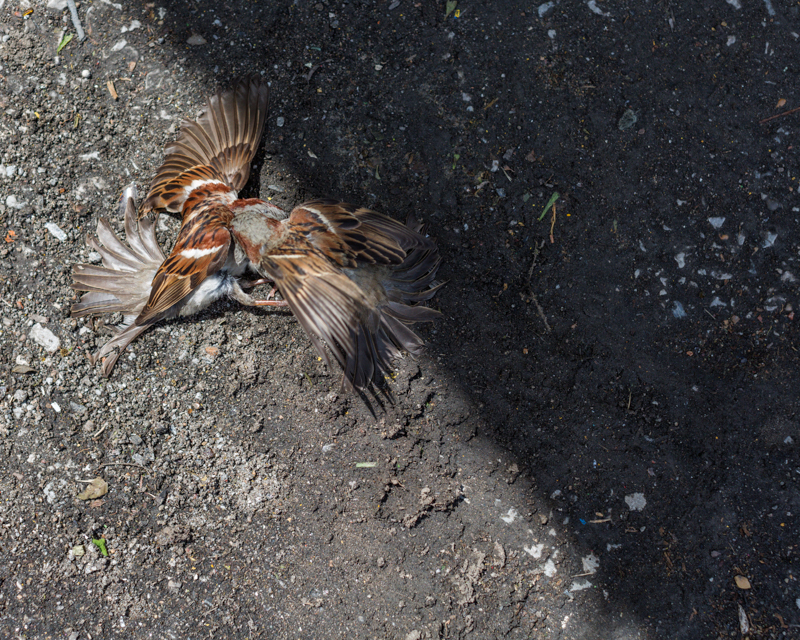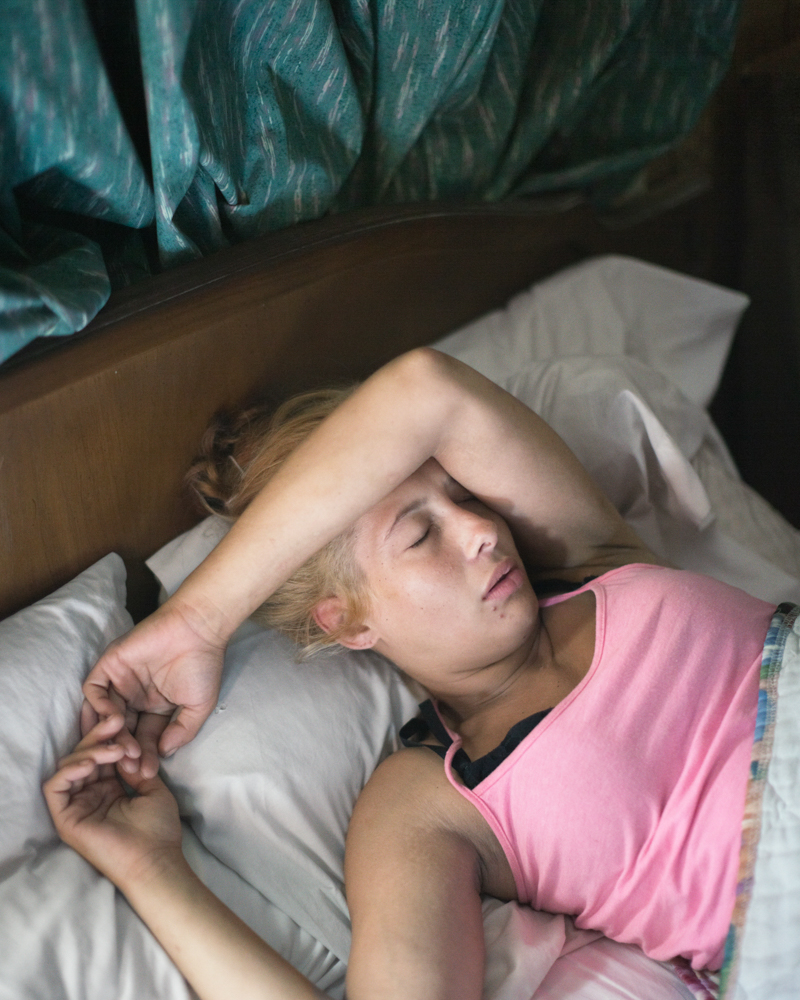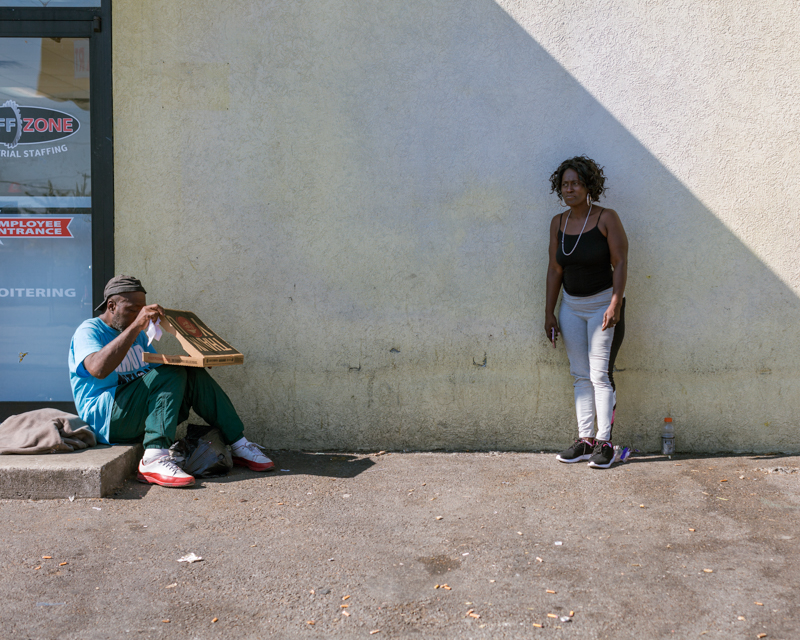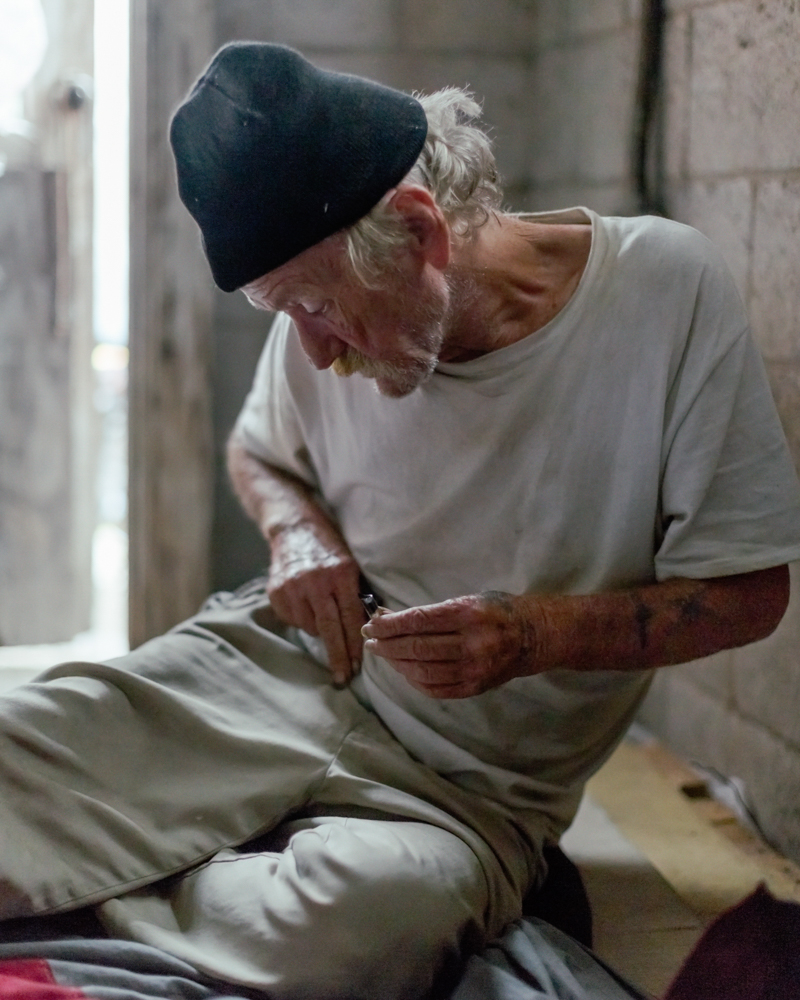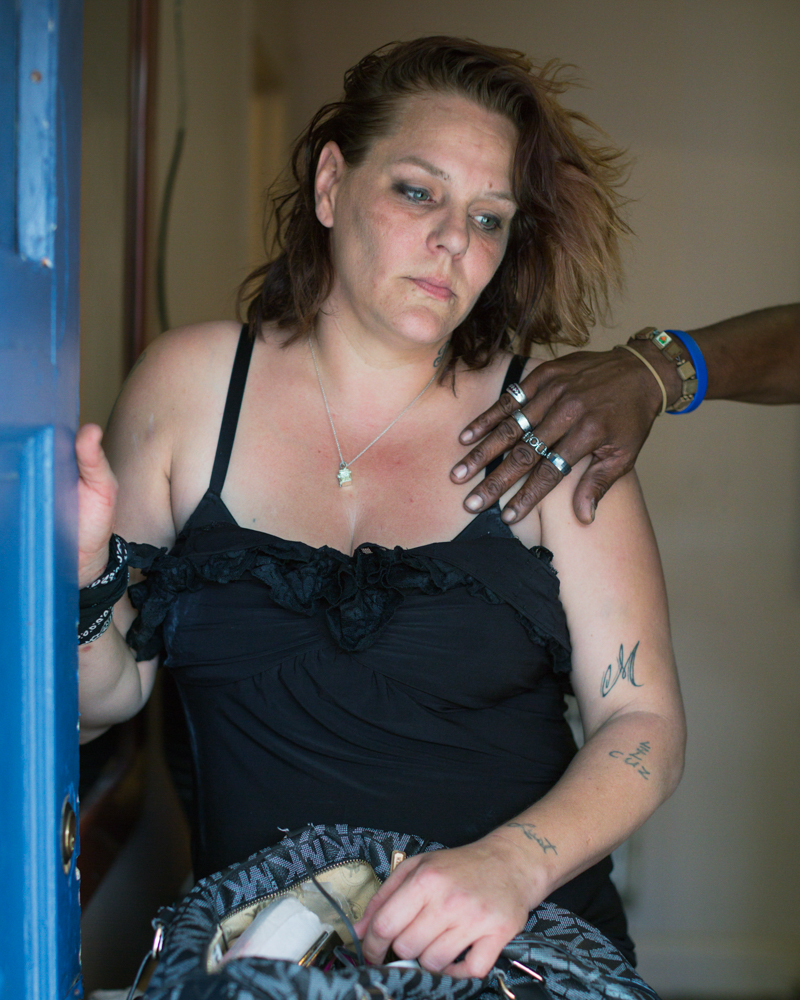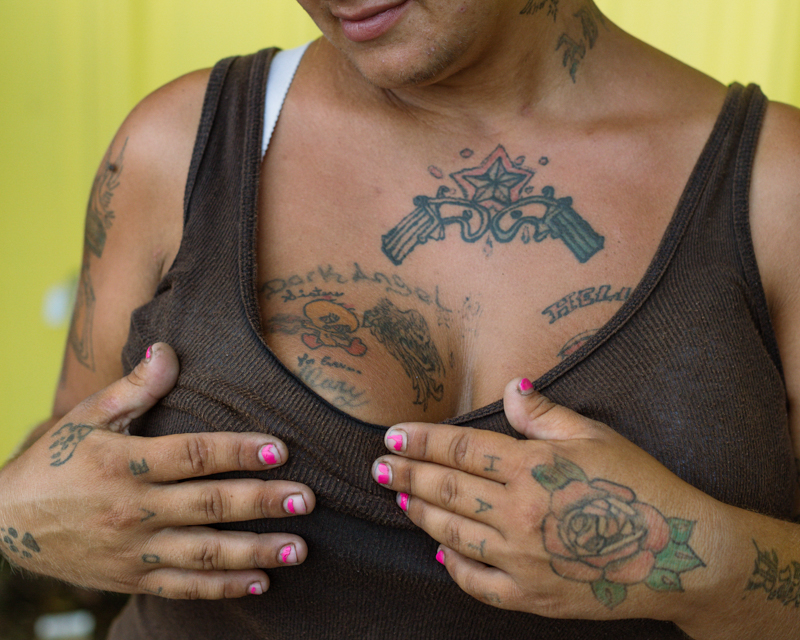Q&A: Tamara reynolds
By Jess T. Dugan | January 3, 2019
Tamara Reynolds is an artist living and working in Nashville, Tennessee. She graduated with a bachelor of fine arts and for the past 25 years, she has been working as a commercial photographer. Her work has been published in many national magazines as well as being a part of many national advertising campaigns. In 2017, she was awarded a master of fine arts degree from Hartford University Photographic International Limited Residency Program.
Along with her commercial career, she continued to pursue her personal projects. The series Southern Route, a photographic series that took her throughout the south, has been recognized by Review Santa Fe and was included in the Finalist List of Photo Lucida 2012, 2013, featured on Lenscratch, Bitter Southerner, NYTimes Lens Blog and PBS News Hour as well as having images “Selected” for AI-AP 29, 30 and 33 publications. Communication Arts and All About Photos also published part of the work. A selection from the series is held in the photographic collections, The Do Good Fund and Cassilhaus. Tamara is one of the 50 photographic artists included in the National Endowment for the Arts and Robert Mapplethorpe Foundation supported exhibition entitled Southbound curated by Mark Sloan and Mark Long of Halsey Institute of Contemporary Art. The traveling exhibition opened in October of 2018.
Her most recent accolades are for her last completed body of work, The Drake. She was awarded the prestigious 2018 CENTER Project Launch Grant and the 2019 Tennessee Individual Artist Grant.
Jess T. Dugan: Hello Tamara! Thank you so much for taking the time to speak with me today. Let’s start at the beginning: what drew you to photography and what was your path to getting to where you are today?
Tamara Reynolds: I was on an extended trip to Europe when I was 15 and got painfully homesick. The thing that brought me comfort was taking pictures. I had a little Kodak 110 Instamatic camera, but I used it with enthusiasm. I squeezed between buildings in Yugoslavia to get a picture of the Adriatic Sea and jockeyed for the best positions to take pictures of the Mona Lisa. When I got home it was the time in my life when everyone was asking what I wanted to do in college. I figured if I was that enthused and soothed by taking pictures, then I should make it my career. I really knew nothing about it. I had no family member or friend who went before me. I just picked it and held on doggedly. After college, at the time I got started in the business, I was one of the few women commercial photographers in Nashville. Hell, there weren’t that many woman commercial photographers in general. It was definitely a male-dominated field. For sure, I was one of maybe two women freelance photography assistants in Nashville for the five years that I did that work. Then I started my own commercial photography business. After many years in the business, I was at a place emotionally and financially to go back to school to get the MFA I had always wanted. The Drake is my thesis project.
JTD: Tell me about The Drake. How did this project begin and what was your inspiration for making it?
TR: I was working on a couple of projects at the time, but The Drake kept bubbling up to the top. The impetus came from the fear I had seeing Nashville changing at such a rapid pace. My career was changing, too, and I felt I was becoming obsolete or irrelevant in this new city. I started looking for some semblance of the Nashville I knew. One day I happened by a little tucked-away café during lunchtime. Well, it was called Your Place Café, but it was more like a bar. There were work trucks and old cars parked in the lot, and people coming and going, in and out. The activity of the place was exciting. It had a down-home vibe. So I stopped for a closer look and company. It happened to be across the street from the Drake Motel in an area just south of downtown Nashville. It was surprising that this tiny corner was still untouched by developers. The regulars bellied up to the counter were friendly. And they invited me back. I was needing that in my life, so I kept coming back. After maybe three or four months, I became more interested in what was happening and taking place between the people outside the bar around the Drake Motel. While I watched from my barstool, I felt that the fear I had must be much more real for these people who were living so close to the bone.
JTD: What is your process for meeting and connecting with your subjects? How much time do you spend getting to know them and photographing them? Do you maintain relationships with them after you photograph them?
TR: I am naturally an open and friendly person. When I see people I am interested in meeting, I am comfortable with approaching them and telling them so. But with this project I was less gregarious. I took a lot of time, returning to the bar, photographing some of the customers and regulars, photographing the landscape. In a sense, I became a regular. I rarely showed up without my camera. I wanted to be clear in my intention of why I was there. But I wasn’t really sure what I was there to photograph, and I would say so. My reasons for photographing there evolved. Over a few months, some of the women became comfortable talking with me, and the intention of the project shifted from the gentrification of the city to the women and men living with addiction. I am genuinely curious about people and their lives. I am open about who I am, and it is easy to share about myself. I find that most people want to tell their story – there is a basic need to connect.
I have maintained relationships with many of the people I got to know, but since the bar has now closed and gentrification has unfortunately finally begun in that area, some of the guys have moved on to other places. They never have a home. They don’t even use the word “live.” They’ll say, “I’m staying at…” If I don’t have their numbers or if their phones have been cut off, I try to find them along Murfreesboro Road or other areas they have mentioned to me. Some of the friends I’ve made have Facebook pages and we stay in contact that way.
JTD: Addiction is currently a major issue in the United States, yet it seems – at least to me – to be widely misunderstood. It is often viewed only as an individual choice or issue and is not understood within larger issues of both personal and systemic poverty, violence, and oppression. What are your thoughts on this? What are you trying to contribute to the larger understanding of addiction through The Drake?
TR: This is such a wonderful question. I wish I had a fix for the misunderstanding and judgment people have surrounding the disease of addiction. Emotional trauma, learning disabilities, unavailable resources, a perpetuation of family dysfunction – the list goes on – are just some of the reasons that addiction may manifest. Rarely do addicts grow up wanting to be addicts. Then the shame around being stuck in addiction keeps those addicted alone and isolated. The help available becomes an insurmountable obstacle to obtain. The very thing killing them is the thing they believe has helped them survive.
What I would like to contribute to the larger understanding of addiction that I have learned in my own recovery is how judgment kept me sick. It was my judgment of others, which stemmed from my judgment of myself, that contributed to my reliance on a substance that gave me a sense of ease in the world. Our society is set up to keep us comparing, competing and scrambling to the top of whatever heap we want to climb. And if we don’t make it, we shift to the bottom of the heap. At least that was true in my life. I thought everybody had it together except me. Seeing myself as an equal to others was beyond my ability.
I finally realized that it was my judgment and my harshness on not being perfect that kept me separate. When I accepted me for who I am, accepting others for who they are came naturally. Now I am in a good place emotionally, psychologically, and I see how connected or alike we all are. It’s a leveling of ego, being able to connect with another human being without an ego involved, being truly present with another person. Will this fix addiction? I don’t know if it will fix addiction, but it will fix society and could in turn fix addiction. Addicts don’t want to connect. Being intimate is the last thing an addict wants to do. You can’t even be intimate with yourself or true with yourself.
I do think we all could learn from the addict, especially if we see the addict as ourselves. It tests our empathy. We are all addicted in some way, trying to escape reality. Being present is hard, or people would do it more. I just know that for me, once I accepted myself, my healing began. And loving became easier. So I believe my project is more about how our society needs love and acceptance to heal. Addiction is just a symptom of the bigger issue.
JTD: All of the photographs in The Drake – which include portraits, detail/still life images, and environmental photographs – were made in the very small physical space of one city block. What made you focus on such a particular area? Do you feel that you are able to make work that is more universally relevant by focusing on a very specific place and group of people?
TR: I was looking for a place in Nashville that had not been affected by all the development going on in the city. It was a surprise to find this little corner where nothing had changed in a few decades. Since completing the project, the area has been caught up in progress. The Drake Motel is a historic landmark, so the building is still there, but Your Place Café as well as the stores on the block are closed. A huge police precinct is being built just down the street, and row upon row of tall skinny condos are going up for the hundred-plus-a-day new residents moving to town. I focused on that small area because it is in my backyard, so to speak. It is personal.
In a sense, every community has a Drake. A place where those on the edge gather. A place where addiction is a given and profoundly transactional. I want this work to be a window into those places people might otherwise choose to overlook.
JTD: I recently had the pleasure of hearing you speak about your work at Review Santa Fe, and you mentioned you have personal experience with addiction. Do you think this shared experience allows you to gain the trust of your subjects? In what ways does your personal experience inform how you approach your subjects and this project?
TR: I have a comfort level and an understanding of the disease that can’t be felt by someone who is not intimately involved with addiction. I understand that illusion of separateness, where you feel like you are different and no one will understand your situation. When you are an addict you feel so much shame. If you have people reach out to you, you feel acknowledged. And I am not intimidated by an unknown. Whenever I felt unsure, I could go to my niece to discuss things. Because of her past, she has a deeper knowledge of this degree of addiction than I. My experience was not quite the same. She and I talked a lot throughout the project. We still do, actually. She knew some of the people I met and cautioned me about certain situations that revolve around particular drugs.
JTD: Some of your photographs are difficult to look at, but they are all imbued with a sense of dignity, even when your subject is clearly struggling or in pain. This sense of dignity is, in part, what makes the work powerful. How do you approach your portraits, not from a formal or practical standpoint, but emotionally?
TR: There’s a quote that I often think about. “Everything is beautiful, if seen correctly.” I always attributed it to Diane Arbus because I thought it was from a biography about her that I read many years ago. I recently found the Patricia Bosworth book, and the quote is actually “Every form correctly seen is beautiful.” Either way, this is how I approach my subjects. I see the beauty in the women and the men hurting to be loved. All people, all forms, I see as beautiful if correctly seen.
JTD: You were recently selected as the winner of CENTER’s Project Launch Grant and are working towards a book of this work. What stage is this project currently in? Do you plan to continue photographing for it? What are your plans for the completed work?
TR: I was working on The Drake with Hannes Wanderer of Peperoni Press, when, as you might know, he unexpectedly passed. The whole photographic community has been in mourning. We were just about to go to press with my book. After a time of coming to terms with the shock of it all, I am now in the process of looking for another publisher. As for photographing more for this project, I would have to say no. When I visit that area from time to time, I may photograph, but now I just go to visit mostly. Actually, the place has changed quite a bit. The developers have made their way to the corner. I am part of a group of women photographers who come together once a month to discuss our work, photography in general and basically to encourage one another. Our last meeting, we discussed publishers and what more might benefit my work. I may be adding additional text in the form of conversations with some of the people in the book and flipping the script to hear what their thoughts are on who I am and what it means for them to see the work.
JTD: What’s on the horizon for you as an artist?
TR: I’m shooting with a 4 x 5 now. Just recently my old camera came out of the closet. It was slow going at first but with time it was as if we hadn’t missed a day. I’m finishing up a story about deer that I hope to wrap up in the new year. A project that I am also excited about is that I have been going to east Tennessee and photographing a small town and the area around it, which has a deep history about the Melungeon people, who are one of numerous tri-racial isolate groups in the Southeastern United States. My boyfriend has recently discovered his own descendant of the Melungeons. Tri-racial in this case means of mixed European, African and Native American ancestry. And I’ve been photographing another road in Nashville that has not yet been redeveloped. I feel it necessary to get some of these old buildings recorded before they are gone. And when I happen upon some of the people there, I want to photograph them as well, because I know they may soon be gone, too.



